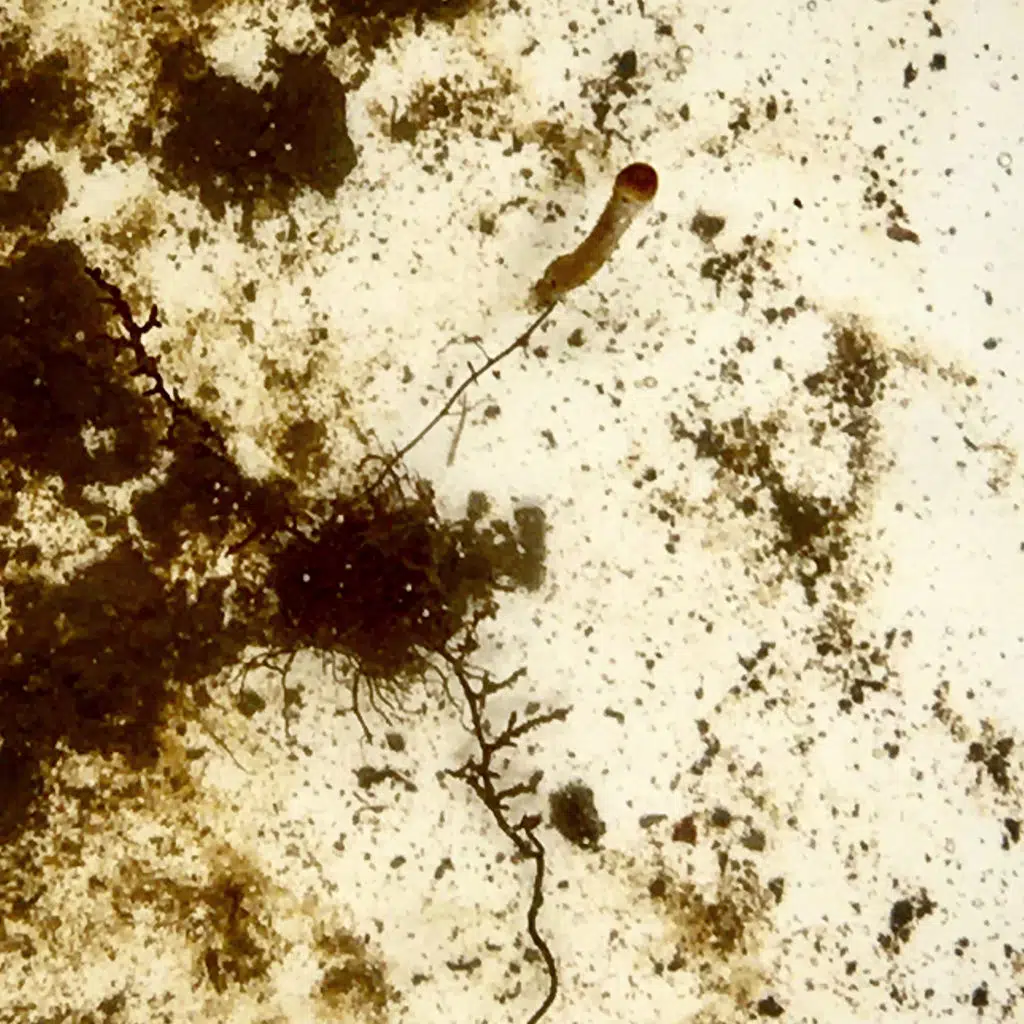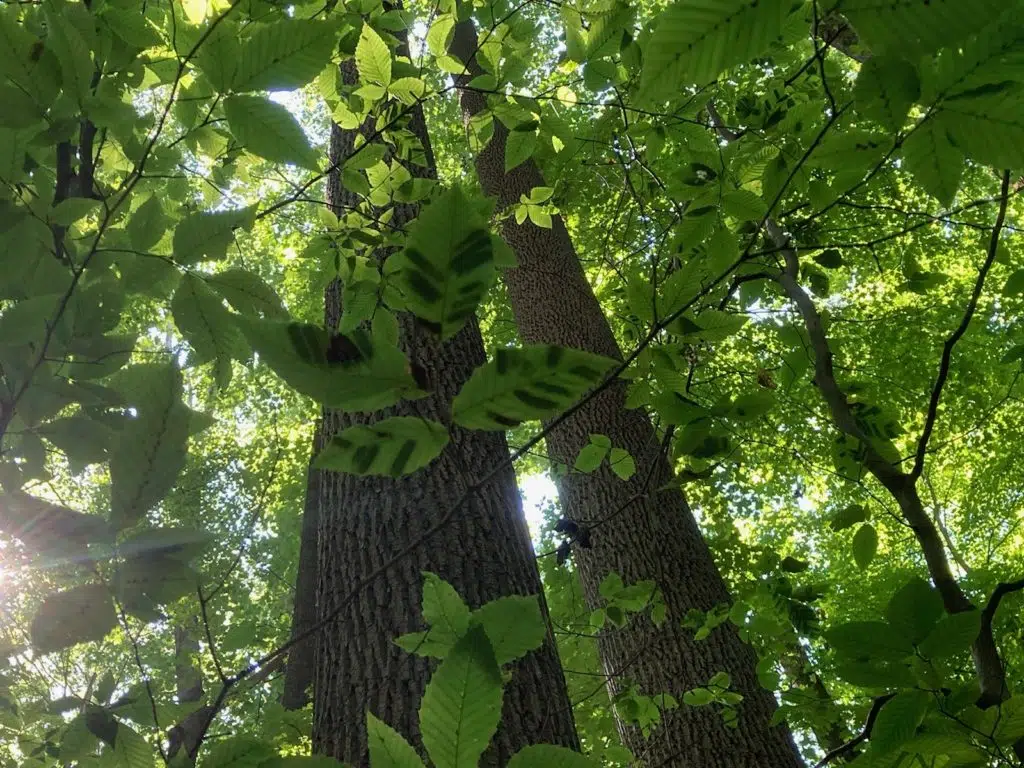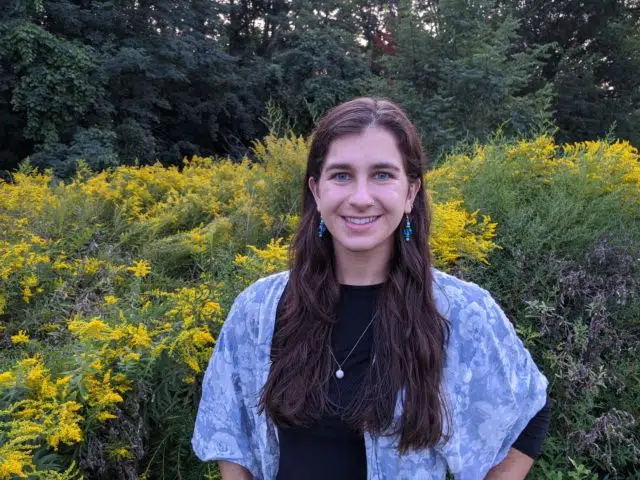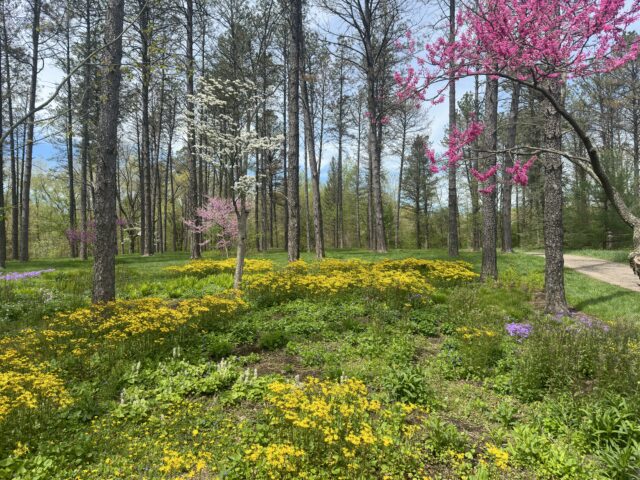Beech Leaf Disease and Forest Fungi: Healthy trees support healthy fungal communities
October 1, 2021

Arboreta play an active role in studying a wide range of tree diseases and the pathogens and parasites that cause them. Holden is no exception. Work from our arboretum and in collaboration with a number of partners, especially the USDA Forest Service, has expanded knowledge on several tree diseases caused by parasites, including the hemlock woolly adelgid and the emerald ash borer. More recently our focus at Holden has been on Beech Leaf Disease (BLD), which is an emerging forest disease affecting beech trees in the midwestern and northeastern United States, and southern Canada. First described in Lake County, Ohio, BLD is caused by a species of parasitic nematode and leads to the disfigurement of leaves, rapid canopy loss, and eventual tree death. Because trees rely on their leaves to absorb energy from the sun and perform photosynthesis, canopy loss severely affects the ability of trees to make carbohydrates (or sugar). Reduced photosynthetic capacity means that the tree may no longer have the energy that it needs to function.

Trees receive their energy from the sun and absorb their nutrients from the ground. While we humans eat food for both energy and nutrients, trees need their leaves to produce energy and their roots to absorb nutrients! One important component of nutrient absorption by roots is a tree’s relationship with symbiotic soil fungi called mycorrhizal fungi. Mycorrhizal fungi absorb up to 90% of a tree’s required nitrogen and 100% of required phosphorus from the soil! The fungi then transfer the nutrients to the tree’s roots in exchange for a portion of the tree’s photosynthetically derived carbohydrates! Because canopy loss caused by BLD impacts a tree’s ability to produce carbohydrate, we predicted that the tree would have less energy to support symbiotic mycorrhizal fungi, leading to a reduction in the portion of roots colonized by fungi.

To test our prediction, we collected small fragments of roots from beech trees being affected by BLD. We categorized the trees based on the severity of BLD symptoms ranging from good, seemingly healthy trees, to intermediate, and then bad, severely impacted trees. Then we looked at the roots under the microscope and counted the number of roots that were colonized by mycorrhizal fungi. We calculated the portion of colonized roots relative to the total root mass to have a standard measure of fungal colonization across our samples. We also used molecular work in the laboratory to see if the species of fungi on the roots of healthy and unhealthy trees were different.

We found that the total portion of roots colonized by mycorrhizal fungi was reduced in unhealthy trees. This result supported our prediction! Through our molecular work we found that the species of fungi on tree roots does not change based on tree health but does differ between beech trees originally sourced from different states (trees from Michigan versus Maine). Because mycorrhizal fungi are impacted negatively when their host trees are severely impacted by BLD, this may lead to a loss of available soil nutrients for the tree. Our results suggest that forest diseases, such as Beech Leaf Disease, may have a broader impact on the ecosystem than just the loss of individual trees. Soil microbes, such as mycorrhizal fungi, are key components of land ecosystems and research into the relationship between forest diseases and beneficial soil microbes may be important for understanding the long-term health of our forests.


Claudia Bashian-Victoroff, MS
Research Specialist
I am a fungal ecologist focused on connections between soil fungi and tree health. My research couples field collections with modern molecular identification methods to investigate ectomycorrhizal species diversity and function. As a research specialist in Dr. David Burke’s lab at the Holden Arboretum, I support research on soil ecology and forest pathology. Currently, I focus on the role of soil fungi in urban canopy restoration in Cleveland, OH. Trees growing in urbanized environments are subject to pressures such as habitat fragmentation, exposure to heavy metals, and soil compaction. Mycorrhizal fungi can enhance plant growth, disease resistance, and drought tolerance; therefore, it is necessary that we establish a better understanding of how these fungi might improve outcomes of urban restoration efforts. Beyond this, I enjoy discussing the importance of fungal research and conservation with diverse audiences through teaching, writing, and mentorship.











